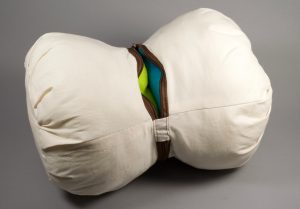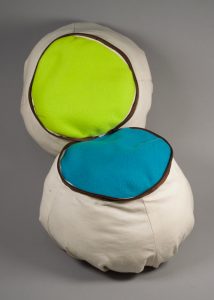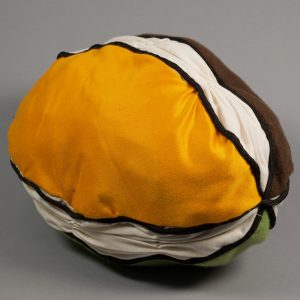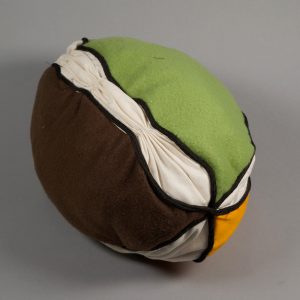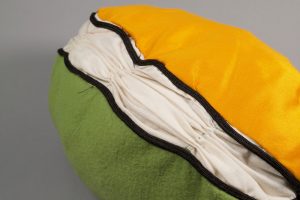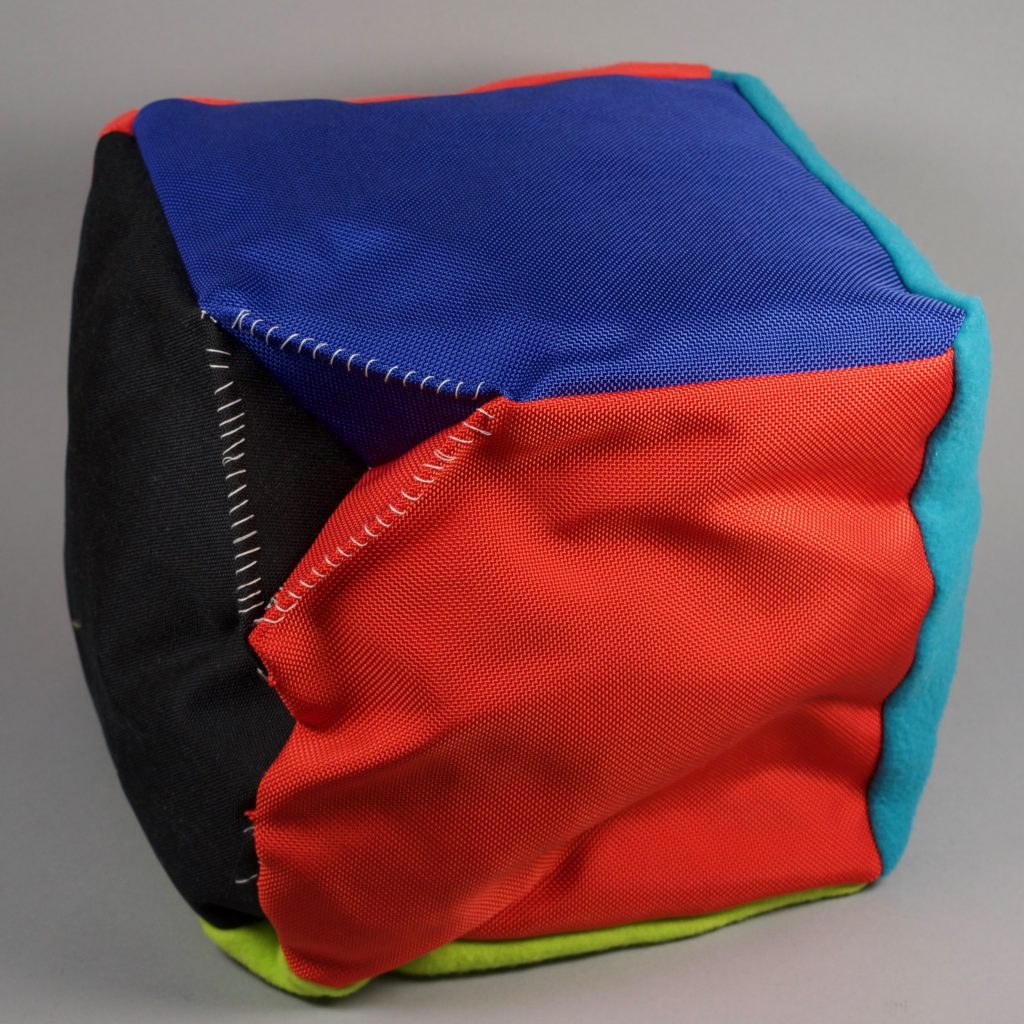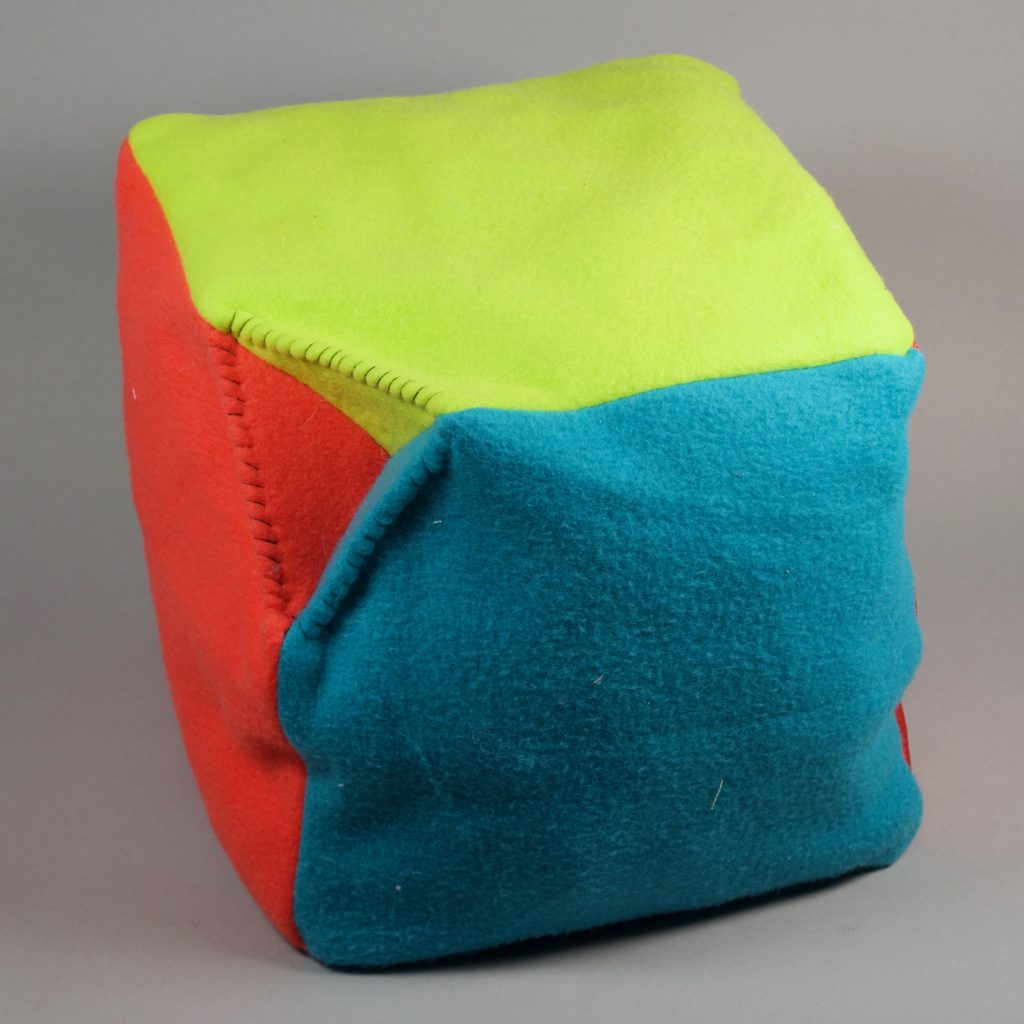Push/Pull Part 1 – Joseph Paetz
I really enjoyed this project because it gave me another opportunity to let materials and process drive the design of my objects. All three of my objects had very little pre-planning. I had a couple of manipulations and shapes I wanted to try, but I had no idea how I was going to fit it all together. In the end, I am pretty happy with my objects, but I also know I should have been more cognizant of time while fabricating. I let myself spend too much time on early objects and thus the level of craft on my later objects is lacking in some areas. I also stuffed two of my objects with paper because we were out of poly fill. I am interested in seeing what they look like with poly fill, especially because the paper is rather lumpy.
Zipper Hourglass
I knew that I wanted to make one of my objects based on a cylinder, and I knew I wanted to try adding pleats to a pattern. However, as I was looking through the fabric, I found a zipper that was almost exactly the same length as the cylinder’s circumference, and I knew I had to work it into the piece. The pleating around the top and bottom of the piece were much harder than I expected, and I didn’t expect it to cause the shape to balloon out quite as much as it did. Luckily, I think it actually helps the piece. Zipper was fairly straightforward, and I really enjoyed the interactivity it gave the object.
Gathered Sphere
For this piece I started off by making a sphere where three sides were gathered. After looking at a couple of options, I decided to finish the object by sewing paracord to the seams to add definition to the panels and more texture to the object. I started attaching the paracord by hand stitching loops around the cord, but I then switched to machine sewing directly on the cord. This was much faster, but it was difficult to keep the paracord in a precise location. It also slightly flattened the paracord. This object is stuffed with paper, and I feel that it would work better with poly fill. Right now it is very lumpy. I would like to see how the object would have turned out if I had only gathered the middle or top of the muslin sections, instead of the entire section.
Dimpled Cube
This cube was the first shape I started, but the last piece I finished. The cube itself has fleece and canvas sides arranged so the viewer can orient it to see only fleece or only flannel. Because of this difference in fabric texture, most of the manipulations I was thinking of had to do with texture. However, due to several factors, I kept the manipulations to a minimum. The two dimpled corners are formed by sewing triangular semi-rigid pieces into the corners of each of the three pieces of fabric at the corners. I used a stiff foam and a plastic grid from one of the bins. I had originally intended these corners to be pushed out so the rigid texture was only noticeable when the piece was touched, but the rigid pieces ran into each other when I tried to invert the corners. Because of this, I left them and whip stitched the edges to accentuate them. I considered other manipulations like baffling, but I recognized they wouldn’t work as well with the paper I used to stuff the piece. I would be interested to see the object with poly fill, but I think that the lumpiness, texture, and sound of the paper fit the piece.

